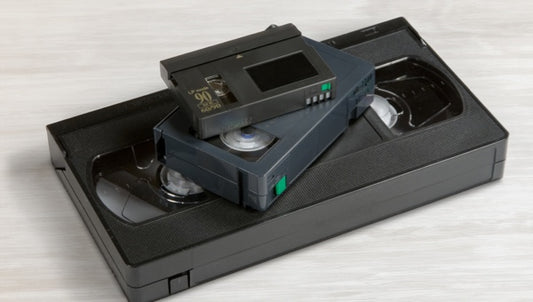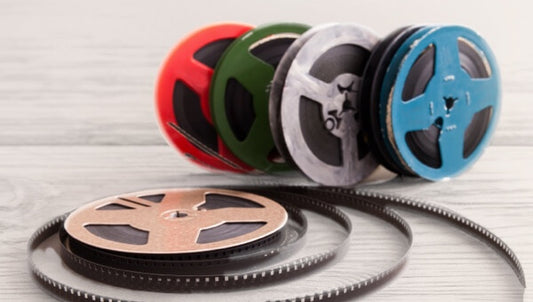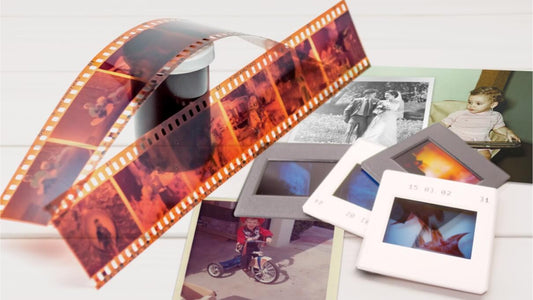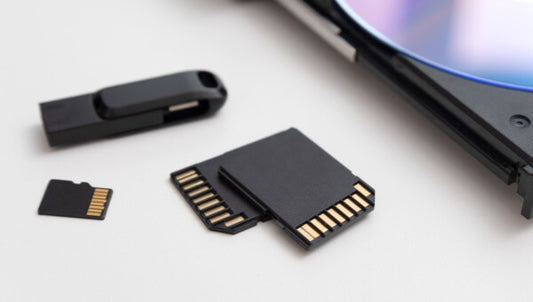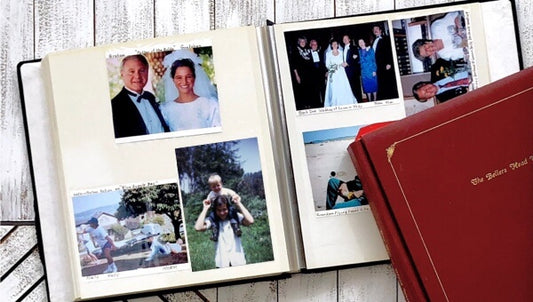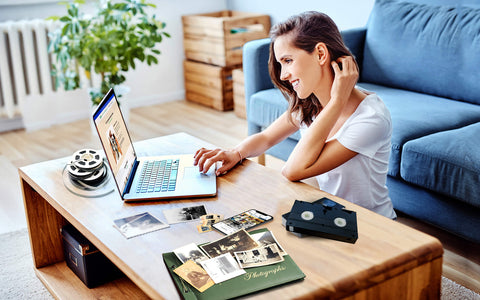Think you know how digitizing old media works? You’re probably falling for at least one of these common myths. From VHS tapes and film reels to photo prints and slides, there’s no shortage of confusion around how to convert them safely. In this guide, we’re breaking down the top 5 myths about media digitization - and the real truth behind each one.
Table of Contents
- Common Misconceptions About Digitizing Old Media
- Myth #1: DIY is Always Cheaper and Easier Than Hiring a Professional
- Myth #2: Once It’s Digital, It Lasts Forever
- Myth #3: All Digitization Services Are the Same
- Myth #4: Home Movies Have Little Value Once Transferred
- Myth #5: You Can’t Improve Old or Damaged Media
- The Truth About Myths About Media Digitization
Common Misconceptions About Digitizing Old Media
There are a lot of common misconceptions about digitizing old tapes, reels, and photos. Some people think DIY is cheaper, others assume digital files last forever. In reality, these assumptions can lead to damaged media or lost memories. Below, we break down the five biggest myths about media digitization—and what’s actually true.
Myth #1: “DIY is Always Cheaper and Easier Than Hiring a Professional”
People think it’s cheaper to handle digitizing at home, but that’s not always true.
Why do people think this? First, there are tons of affordable gadgets. You can walk into a store and grab a $60 scanner or a $30 capture card. That makes it feel like DIY digitizing is a bargain. And yes, upfront, it might look that way. But that’s just one part of the cost.
The truth is, DIY gets expensive fast. You might need special cords or converters. You could end up upgrading your computer to handle video software. Most importantly, there's a learning curve. It takes hours to learn how to scan or transfer things the right way. Plus, old media like VHS or film reels can be fragile. One mistake could ruin them forever.
In many cases, professional digitizing companies can finish the job quicker. They also handle your media with care. If you live in Texas, using a Houston video transfer service might actually save you money long-term.
Myth #2: “Once it’s Digital, it Lasts Forever”
Just because something is digital doesn’t mean it’s safe forever.
This myth is super common. People think that once they transfer tapes or photos to a hard drive, the job is done. But that's risky thinking. Digital files are just as vulnerable as physical ones, just in different ways.
Files can get corrupted. Hard drives can crash. USBs get lost. And don't forget, file formats can go out of date. Remember Flash video files? Try opening one now. You might not even have the right software. That’s why it's important to always back up files in several places and updating formats every few years.
Best ways to protect digital files:
- Store copies on more than one hard drive
- Use a trusted cloud storage service
- Keep one backup in a different location (like with a family member)
- Update file formats every few years to avoid software issues
- Check your files at least once a year to make sure they still open
One good method is to store files in multiple places: one hard drive, one cloud service, and maybe even a second drive offsite. This triple-backup plan gives your memories a real chance to last. If you're transferring something like a reel from the 1960s, a service that can convert 16mm film to digital will likely keep your files in a format that's future-ready.
Myth #3: “All Digitization Services Are the Same”
Not every service handles your memories the same way.
People often assume one service is just like another. If a company scans photos or transfers tapes, they must all be doing the same thing, right? Not really. The tools, the quality, and the care involved can vary a lot.
Some companies use higher-resolution scanners. Others include extras like color correction or light restoration. There’s also a difference in how they handle your originals. Do they keep them organized? Do they clean them before scanning? These steps matter more than people think.
This is one of those myths about media digitization that leads people to choose the cheapest option without checking quality. You should always check samples or read reviews before picking a service. Some offer better support, faster results, and better organization. If you want to digitize old slides, a proper 35mm slide conversion to JPEG service like Capture will provide clear, crisp results - not blurry images with bad lighting.
Myth #4: “Home Movies Have Little Value Once Transferred to a Hard Drive”
People underestimate the power of digital files—they are just the beginning.
Many think that once you scan or transfer old videos, the fun is over. You watch the file once, then forget it. But digital memories are easier to use and share than physical ones. That’s where the real value shows up.
You can edit home videos and cut out boring parts. You can add music or subtitles. Want to share them on Facebook or at a family reunion? Now you can. You can even turn those clips into short films or slideshows for birthdays and anniversaries.
Younger family members might never watch a VHS tape. But they’ll watch a 2-minute clip on YouTube or TikTok. That’s how digitized media keeps memories alive across generations. It turns something forgotten into something shared and loved again.
Myth #5: “You Can’t Improve Old or Damaged Media”
Old media may look bad now, but new tools can bring them back to life.
People often give up on old footage. If a tape looks grainy or a photo is faded, they assume nothing can fix it. That’s just not true anymore. Technology has changed. Even free apps can sharpen blurry images or improve lighting.
But professionals can go further. They use high-end software to clean up noise, reduce shakiness, and bring back color. Old scratches and dust marks? Gone. Even if full restoration isn’t possible, small fixes can make a big difference. Watching a stable, color-corrected video from your childhood hits differently.
This is one of the most common myths about media digitization - that damaged footage is beyond saving. If you’ve got wedding footage from the 1980s or photos from the 1950s, don’t throw them out. Some of that can be saved. And with better tools, it might look even better than the original version did.
The Truth About Myths About Media Digitization — And Why It Matters
Quick Recap:
- DIY isn't always cheaper
- Digital files still need backups
- Not all services are equal
- Home videos have lasting value
- Old media can be restored
The world of media conversion is full of outdated advice and misunderstandings. Myths about media digitization lead people to take risks they shouldn’t, cutting corners, skipping backups, or trusting the wrong tools. Some end up damaging their media or losing priceless memories altogether.
The truth? Digitization is about more than just transferring files. It’s about preserving your memories the right way - from format to storage to long-term access. When you avoid the common myths and let professionals at Capture handle what matters, your memories stay safe for generations to come.






